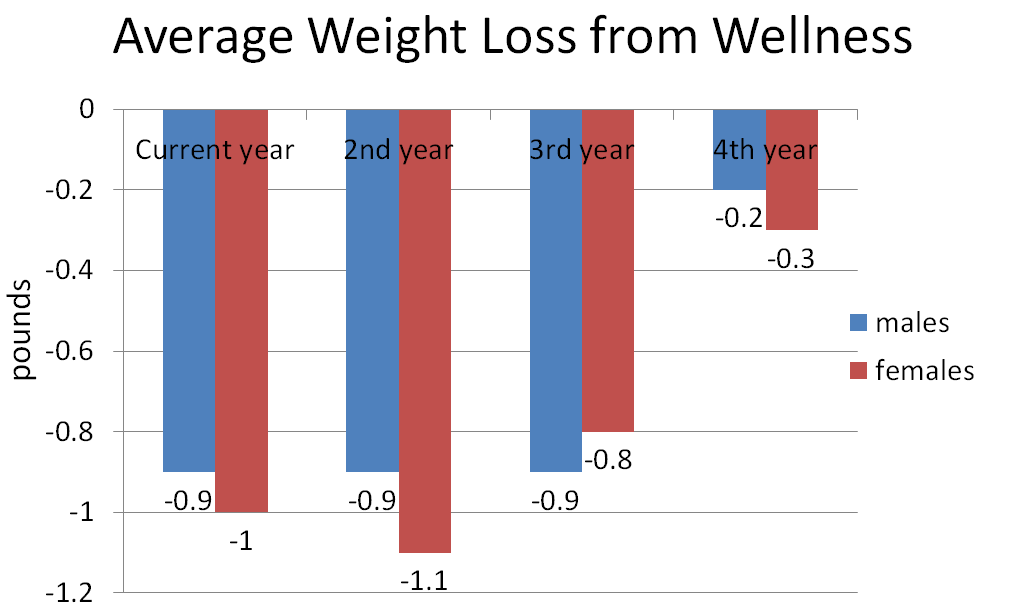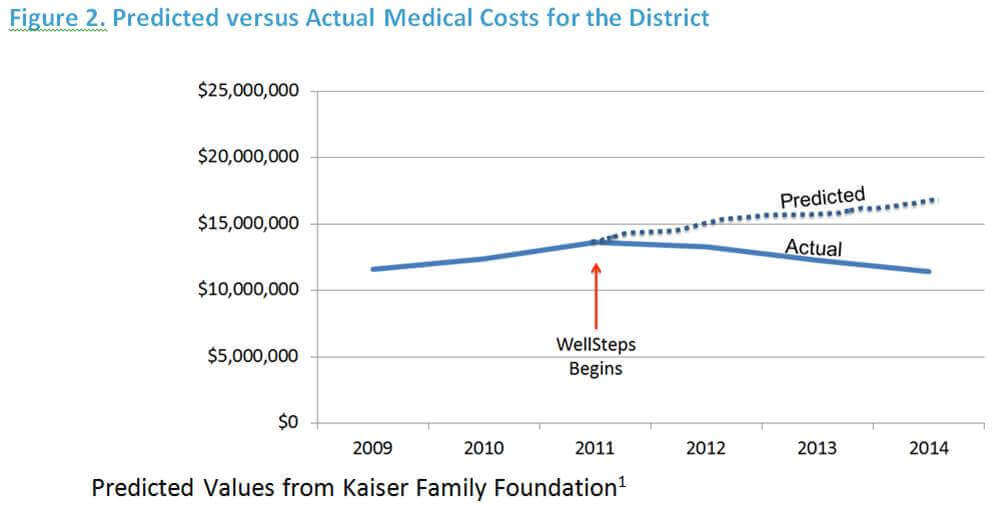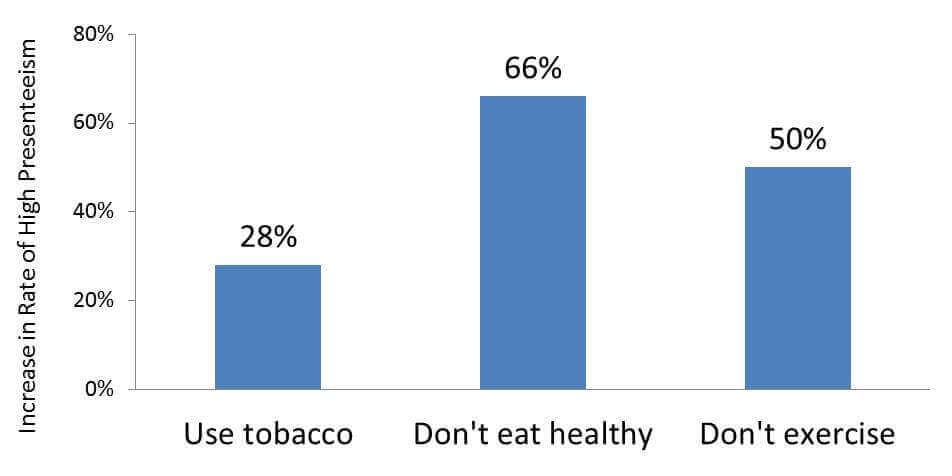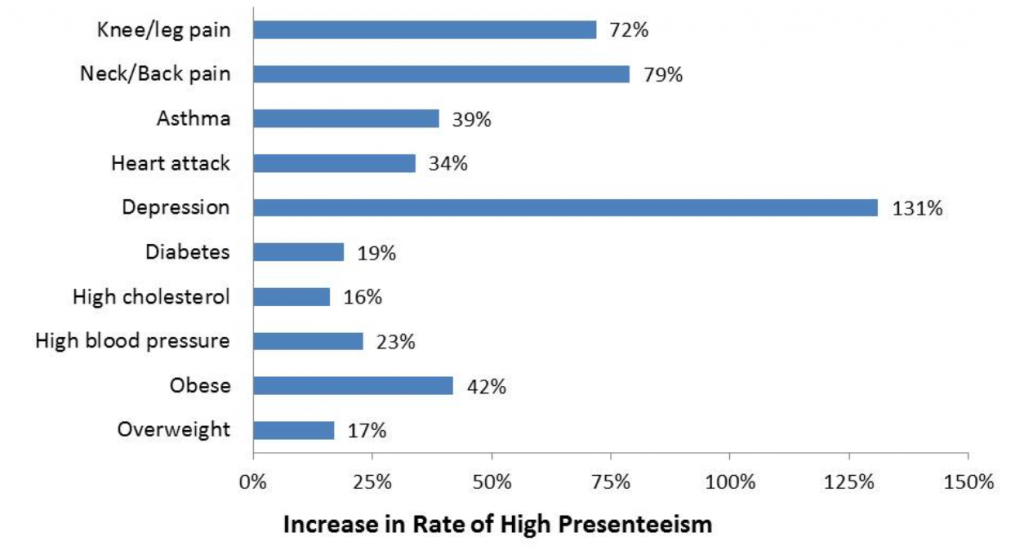Published Workplace Wellness Statistics Show the Benefits of Wellness
Think of the different benefits employers typically offer. These could include a retirement or pension plan, healthcare, paid time off, or maternity leave. These tools help your organization recruit and maintain qualified employees. But, there are no studies or workplace wellness statistics that show that offering these benefits has any measurable effect on it worksite’s ability to recruit or maintain workers. We do them because we believe they are important.

These things are actually very hard to study and we have a feeling or sense that they do make a difference in our ability to attract good workers. But, there is no science to back any of this up.
Now, conversely, consider your wellness program. Unlike all the other benefits your worksite offers, wellness programs have been studied for decades. In fact, there are hundreds and hundreds of rigorous scientific evaluations of the impact of wellness programs. We are fortunate to have access to mountains of workplace wellness statistics. There is more research on the impact of wellness programs than anything else your company does. Granted, the research is not perfect—no research ever is.

But after decades of scientists evaluating programs, we have an enormous amount of very solid statistical evidence that show the benefits of having a wellness program. As one of many scientists who have published research on the impact of worksite wellness programs, it was not too difficult to create this list of workplace wellness statistics every employer should know.
5 Proven Workplace Wellness Statistics Every Employer Should Know
1) Wellness Programs Improve Employee Health Behaviors
In truth, the core of every good wellness program is behavior change. With the right education, skills, motivation, skills/tools, and social support, people change behaviors. Wellness programs are good at helping people adopt and maintain healthy behaviors. This is perhaps the biggest benefit of having a wellness program.
Healthy behaviors lead to lower health risks, and lower health risks lead to less chronic disease. With less chronic disease employees have fewer health care costs. It looks like this:

Many studies have evaluated the ability of wellness programs to improve health behaviors. Not every wellness program is able to show positive results. Well-organized programs that follow effective behavior change models show the best results. Here are the results from a recently published evaluation. The 1,800 employees at this worksite reported their health behaviors at baseline, one year, and two years after the program began.

Source: Population Health Management article
Just about anybody can have healthy behaviors for a few days or weeks. The key is to maintain healthy behaviors for years. As soon as you stop having healthy behaviors you stop getting the benefits.
I like workplace wellness statistics that go out for two years because the results are pretty conclusive by that time. If you can get your employees to participate in a good wellness program chances are they will adopt and maintain healthy behaviors for years to come.
Most wellness studies show the employees have better health behaviors. They eat healthier foods, they eat smaller portions, they exercise more often, they smoke less, they don’t drink in excess, they wear seat belts more often, and they’re pretty good at controlling their stress.
Wellness programs can also help alleviate depression and the symptoms of depression as well as improve life satisfaction.
Even the American Heart Association has completed an extensive review of the ability of wellness programs to improve health and reduce cardiovascular risk.
Others have evaluated all of the research and reported that wellness programs, do in fact, have the ability to improve employee health. In 2013 researchers completed one of the most rigorous and comprehensive reviews of wellness programs. The Rand Report is the name of this study. Here is what the authors concluded:
We find that workplace wellness programs can help contain the current epidemic of lifestyle-related diseases, the main driver of premature morbidity and mortality as well as health care cost in the United States.
Soeren Mattke, Lead Author of the Rand Report
2) Wellness Programs Reduce Elevated Health Risks
Any good wellness program focuses on helping employees adopt healthy behaviors. Elevated blood glucose, high blood cholesterol, and high blood pressure are almost all caused by unhealthy diets and lack of physical activity.
Eating and exercising are behaviors. A few years ago, a randomized clinical trial that helped people improve their nutrition and physical activity was published.
Our workplace wellness statistics showed that in as little as six weeks health risks could improve dramatically. Those who maintain healthy behaviors experience lower health risks for six weeks, six months, 12 months, and even out to 18 months after this program began.
When you change your diet, get active, and avoid tobacco, really good things happen. Boise School District is a WellSteps client and not long ago we published the results of their changes in health risks. After one year, a lot of employees who had elevated health risks at baseline, had reached healthy risk levels.

Source: JOEM
Reductions in elevated health risks are important. The New England Journal of Medicine reported that for every 1% drop in total cholesterol, the risk of having a heart attack dropped by 2 to 3%. For every one point drop in elevated diastolic blood pressure, there is another 2 to 3% drop in heart disease risk.
Low health risks are the foundation of good health, and wellness programs are a great way to help employees and their spouses avoid elevated health risks. There are hundreds of research papers that evaluated the ability of wellness programs to reduce elevated health risks.
One particular study looking at almost 200,000 wellness participants and showed that 5 of 7 health risks improved after one year.
Another researcher looked at all of the published studies to get a consensus. This review showed that comprehensive wellness programs will have a significant impact on elevated health risks.
A Weakness of Wellness Programs
There is one weakness that almost all wellness programs have. After 30 years of evaluating dozens and dozens of programs it has become clear that it is difficult to impossible to get large groups of employees to reach and maintain a healthy body weight. The obesity epidemic is caused by a variety of cultural factors and helping employees lose weight has proven to be exceptionally difficult.
While the workplace wellness statistics suggest that helping people improve blood cholesterol, blood pressure, and blood glucose is possible, helping people lose weight and keep the weight off has proven to be hard to do. Worksite wellness programs are not very effective at helping people lose weight.
Just take a look at the body mass index (BMI) data in the table above. Those who are higher weight do lose some weight after a few years but not very much.
There is some hope. Recently, the RAND study showed some promising results:

Source: Rand Report
If the focus of your wellness program is to help individuals reach and maintain a healthy body weight you should prepare yourself to be disappointed. The unhealthy culture that surrounds most of us makes it extremely difficult to lose weight, in fact, most people in the United States and in the industrialized world gain weight every year.
So there’s a couple ways to look at this. Wellness programs are very effective at reducing elevated health risks like blood pressure, glucose, and cholesterol. But they are not very effective at helping people lose weight.
Without the impact of all the wellness programs in the world, obesity would be even worse than it currently is.
Wellness programs may not help your employees reach a healthy body weight but it looks like they are helping your employees to stop gaining weight.
3) Wellness Programs Reduce Health Care Costs
There are almost 100 different studies that have looked at the financial impact of wellness programs. These studies are not easy to do, they take conducting some extremely complicated ROI analyses and they take years to complete. But they help us find great workplace wellness statistics.
In 2001, the most comprehensive review ever completed on the financial impact of worksite wellness programs was published.
That study alone reviewed 100 different research papers. The ability of a wellness program to reduce healthcare costs depends upon how effective the program really is. Having an occasional lunch and learn about nutrition or just doing a biometric screening will not be enough to move the healthcare cost needle.
Comprehensive worksite wellness programs that improve employee behaviors will see a bending of the healthcare cost trend. Most often they will discover that the savings from program participation will be greater than the actual cost of the program. Almost every one of these return on investment (ROI) studies show a positive return on investment. Researchers from Harvard recently published another summary of the wellness ROI research.
Here is what they found:
| Study Focus | Number of Studies | Average Study Length | Average ROI |
|---|---|---|---|
| Health Care Costs | 22 | 3 years | 3.27 |
Source: Health Affairs
Among the 22 different studies that looked at wellness programs and healthcare costs, the average return on investment was 3.27. This means that for every dollar that was spent on the program the company saved $3.27 because of reduced healthcare costs.
Last year researchers evaluated the impact of the WellSteps wellness program at a large school district. Here is the actual healthcare cost trend for this worksite.
After four years of wellness this worksite is actually spending less on healthcare costs than it did before the program began. For every dollar they spent on wellness they saved $3.3.

Source: Merrill et al. 201
Anyone who still thinks wellness programs don’t improve health is choosing to completely ignore hundreds of peer-reviewed scientific research papers that say otherwise.
4) Wellness Programs Improve Productivity
Poor employee productivity can be defined as physically being at work but not working. This type of poor productivity is called presenteeism. It is estimated that the cost associated with presenteeism due to poor employee health is at least 2 to 3 times greater than direct health care expenses.
While the estimated cost of presenteeism dwarfs the cost of health care, it does not receive the same level of scrutiny among employers preoccupied with controlling the direct costs of poor employee health.

There are a lot of reasons why employees have low productivity. They may not know how to use the equipment, they may be distracted by other employees, they may not know what they are doing, they may be tired, or they might be on Facebook. One of the main causes of presenteeism is poor health.
New workplace wellness statistics have been revealed in recent research published by the journal Population Health Management.

Smokers were 28% more likely to have high presenteeism than non-smokers. Employees with an unhealthy diet were 66% more likely to have high presenteeism than those who regularly ate whole grains, fruits, and vegetables.
Employees who didn’t exercise very much were 50% more likely to have high presenteeism than employees who were regular exercisers. These findings demonstrate that poor health behaviors are strongly associated with high levels of presenteeism.
In short, unhealthy individual lifestyle choices may result in substantially higher levels of lost productive work time.
This figure displays increased rates of high presenteeism among employees who smoke, don’t eat healthy, or don’t exercise regularly. Poor health behaviors eventually lead to elevated health risks and chronic diseases. The figure below shows how health risks such as excess body weight, elevated blood pressure, and high cholesterol increased the odds of having high presenteeism.
The other health conditions in this figure further paint the presenteeism picture—the presence of risk factors, pain, and chronic disease, especially chronic depression, dramatically increase the odds of having high presenteeism.
Looking at this graph, you can see that employees who suffer from neck/back pain are 79% more likely to have high presenteeism than employees who do not have neck/back pain.

These results confirm several ideas about the benefits of wellness. Presenteeism is associated with poor health behaviors as well as elevated health risks and the presence of chronic disease.
Wellness programs that focus on helping employees have good health behaviors will eventually have an impact on productivity. You can read about the connections between worksite wellness and productivity in a previous blog.
5) Statistics Show Wellness Programs Can Decrease Absenteeism
There are over 50 papers that have looked at the connections between worksite wellness programs and reduced absenteeism. Worksites with comprehensive wellness programs can experience reduced absenteeism for a variety of reasons:
- Employees with good health behaviors have lower absenteeism
- Employees who can control their stress have lower absenteeism
- Employees with healthy blood pressure, cholesterol, and glucose have lower absenteeism.
- Employees who are a healthy weight have lower absenteeism
I summarized all of these studies in one monster paper that was published a few years ago. You can read the nitty-gritty details of all 46 papers if you ‘re really curious.
Any wellness program that can reduce absenteeism will experience cost savings. Harvard researchers looked at the ROI of wellness programs as they relate absenteeism and demonstrated that for every dollar wellness programs spend on wellness they can save $2.73 and reduce absenteeism.
| Study Focus | Number of Studies | Average Study Length | Average ROI |
|---|---|---|---|
| Absenteeism | 22 | 2 years | 2.73 |
Source: Health Affairs
Wellness programs have the ability to improve employee health and this can have an impact on whether or not individuals are absent from work.
Workplace Wellness Statistics So What?
The sheer volume of workplace wellness statistics gives us a good idea of what it takes to produce positive wellness outcomes. There is more data and statistics on your wellness program than anything else your worksite does.
We know the benefits of having a wellness program. However, the challenge is to create a program that improves employee health and reduces employee-related expenses.
Wellness Questions Others Are Asking:
What Percentage of Employees Participate in Wellness Programs?
As of 2020, most employers had wellness programs of some kind — including 53 percent of small firms (those with three to 200 employees) and 81 percent of large companies.
Are Workplace Wellness Programs Effective?
In short, effective wellness programs:
- Demonstrate high levels of program engagement
- Significantly improve healthy behaviors
- Reduce elevated health risks like high blood pressure and glucose
- Result in lower health care costs because employees need less medical care
- Improve employee morale and productivity
How Do You Measure Workplace Wellness?
Wellness program evaluations can examine participation, healthy behaviors, health risks, changes in health care costs, and productivity, for example. To measure workplace wellness you have to decide what outcome to examine. Here is a great guide on how to evaluate a wellness program. Use these techniques to create your own corporate wellness statistics.
